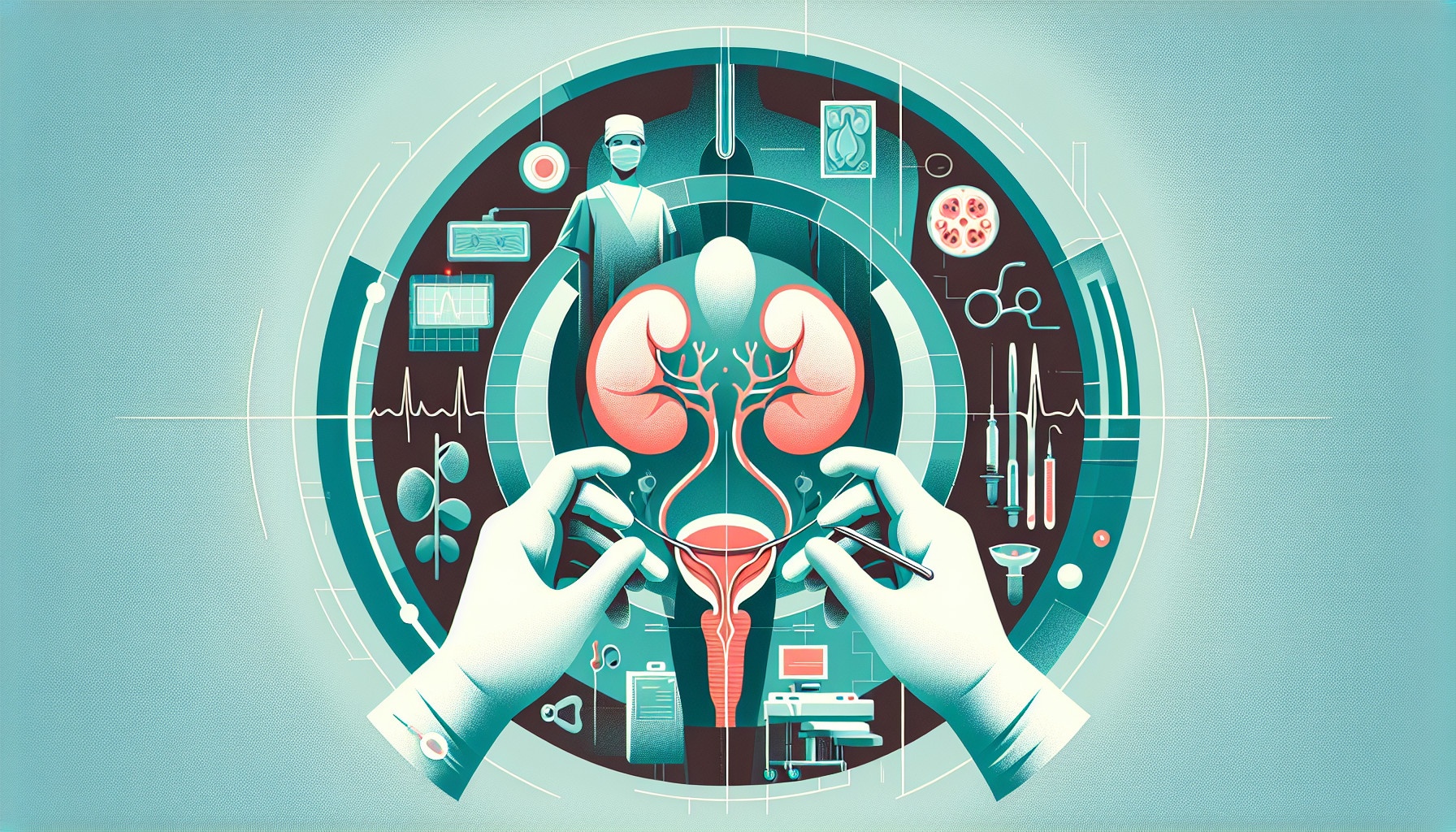Our Summary
This research paper discusses a rare but serious complication that can occur during a common surgery for enlarged prostates, called transurethral resection of prostate (TURP). This complication is an explosion inside the bladder, which can be caused by the ignition of gases (such as hydrogen, hydrocarbons and oxygen) that have built up in the area. The authors report on a 60-year-old man who experienced this complication during his TURP procedure. However, the medical team quickly recognized what was happening and were able to immediately repair the damage, resulting in a positive outcome for the patient.
FAQs
- What is the most common operation performed for obstruction due to prostatic enlargement?
- What is a rare complication that can occur during a transurethral resection of the prostate (TURP)?
- How was the bladder explosion in the 60-year-old patient treated and what was the outcome?
Doctor’s Tip
A helpful tip a doctor might tell a patient about bladder surgery is to make sure to follow all pre-operative instructions given by the medical team, such as fasting before surgery and stopping certain medications. It is also important to inform the medical team about any allergies or medical conditions before the surgery. After the surgery, it is crucial to follow all post-operative care instructions, such as taking prescribed medications, avoiding heavy lifting, and staying hydrated. It is important to report any unusual symptoms or complications to the medical team immediately.
Suitable For
Patients who are typically recommended for bladder surgery include those with benign prostatic hyperplasia (BPH) causing obstruction, bladder cancer, urinary incontinence, recurrent urinary tract infections, bladder stones, and other conditions affecting the bladder and urinary system. Bladder surgery may also be recommended for patients who have not responded to conservative treatments or medications.
Timeline
Before bladder surgery:
- Patient presents with symptoms of urinary obstruction, such as difficulty urinating, frequent urination, or weak urine stream.
- Patient undergoes diagnostic tests, such as a physical examination, urine tests, and imaging studies, to determine the cause of their symptoms.
- Patient is informed of the need for bladder surgery and is prepared for the procedure, including discussions about potential risks and benefits.
After bladder surgery:
- Patient is closely monitored in the recovery room for any immediate post-operative complications.
- Patient may experience temporary discomfort, pain, or urinary symptoms following the surgery.
- Patient is given instructions on how to care for their incision site, manage pain, and prevent infection.
- Patient may need to follow up with their healthcare provider for further monitoring and follow-up care.
- Over time, patient should experience improvement in their urinary symptoms and overall quality of life following successful bladder surgery.
What to Ask Your Doctor
- What are the benefits of bladder surgery for my condition?
- What are the potential risks and complications associated with bladder surgery?
- How long is the recovery period after bladder surgery?
- What is the success rate of bladder surgery for patients with similar conditions?
- Are there any alternative treatments or procedures available for my condition?
- How many times have you performed this specific type of bladder surgery?
- What can I expect during the procedure and immediately after the surgery?
- Will I need to make any lifestyle changes or follow a specific post-operative care plan after bladder surgery?
- What is the long-term outlook for patients who undergo bladder surgery?
- Are there any support groups or resources available for patients who have undergone bladder surgery?
Reference
Authors: Gupta J, Gupta A. Journal: BMJ Case Rep. 2019 Jul 12;12(7):e229580. doi: 10.1136/bcr-2019-229580. PMID: 31302622
